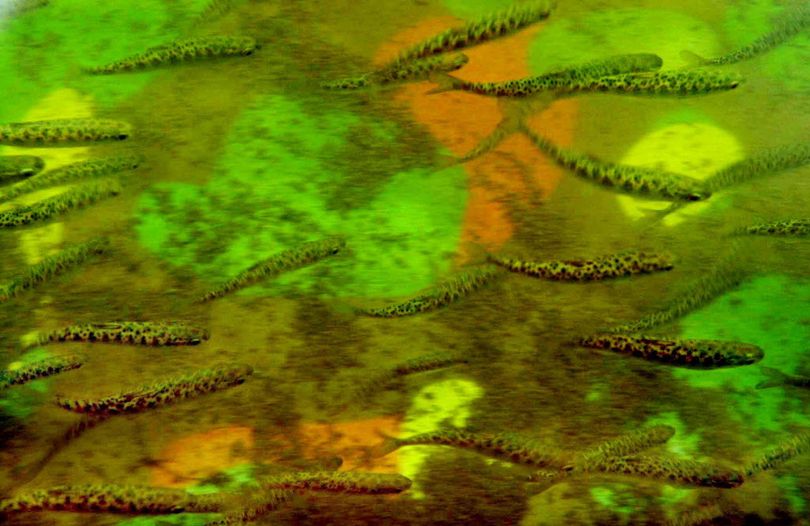Spring chinook, steelhead fry hit hard at Clearwater hatcheries this week

The spring chinook – offspring of adults that returned to the hatchery almost a year ago – were just weeks old and perished when a electrical breaker that controls a water circulation system tripped. A siren that is designed to alert hatchery personnel to such power disruptions also failed.
“This is a tragic loss of fish that the tribe has worked hard to produce,” said Mary Jane Miles, chairwoman of the Nez Perce Tribal Executive Committee. “The tribe plans to work with the (U.S.) Fish and Wildlife Service to identify the mechanical issues that caused the problem to ensure it does not occur again.”
The hatchery is owned by the federal fisheries agency and operated by the Nez Perce Tribe. Becky Johnson, production manager for the tribe’s Fisheries Division, said the loss of power that occurred between 1 and 7 a.m. Friday wiped out the majority of the hatchery’s chinook that were destined to be released next spring and return as adults in 2020. The tribe is working with officials at Dworshak and Clearwater hatcheries, both at Ahsahka, to transfer surplus spring chinook at those facilities to Kooskia.
“There is a good chance we will be able to backfill the entire brood year of fish,” she said.
Older spring chinook and juvenile coho were not affected by the loss of power.
Steelhead scramble
Johnson said about 1.4 million juvenile steelhead that are about three to four weeks from reaching the smolt stage will be released from the Dworshak Hatchery starting today to shield them from high levels of dissolved nitrogen. The steelhead were scheduled to be released in mid-April.
Officials at the U.S. Army Corps of Engineers are making room in Dworshak Reservoir to capture the coming spring runoff and protect places like Portland from flooding. To accomplish that, they are releasing 25,000 cubic feet of water per second. Steve Hall, water manger for the corps’ Walla Walla district, said flows leaving the dam likely will remain that high through April.
In most years, a good portion of that volume would run through hydroelectric turbines. But the biggest of three turbines at the dam is being repaired and unavailable. So the corps is spilling most of it, about 20,000 cfs.
The plunging water creates dissolved-gas percentages in excess of 125 percent in the North Fork of the Clearwater River, the source of water for Dworshak Hatchery. The facility is equipped with degassing equipment, but Johnson said it can’t mitigate the nitrogen to a level that is safe for fish.
Last week, when the corps was releasing 22,500 cfs from the dam, gas levels climbed to 105 percent in the hatchery, and the fish there showed the signs of gas-bubble trauma. When examined under a microscope the fish had bubbles in their gills, lateral lines and eyes.
“When it got up to 104 and 105 percent, the fish stopped eating,” she said. “When they stop eating, you are not helping yourself by holding fish in the hatchery.”
On Monday, hatchery officials released juvenile spring chinook from the hatchery. Those fish began their journey to the ocean about a week ahead of schedule. The steelhead will be released about a month early – before reaching the smolt stage, when their bodies begin to change to accommodate salt water and become more buoyant, a feature that helps them be washed downstream to the ocean.
Johnson said steelhead smolts were released from the hatchery about two weeks early in 2011, and those fish experienced below-average return rates as adults. But 2011 was a lower-flow year and the early-released fish took an extra long time to progress downstream. The higher flows this spring could help the fish survive better, Johnson said.
Another 1 million juvenile steelhead are being held at the hatchery in water that comes from Dworshak Reservoir and has normal gas concentrations. Those fish will be released in mid-April.
